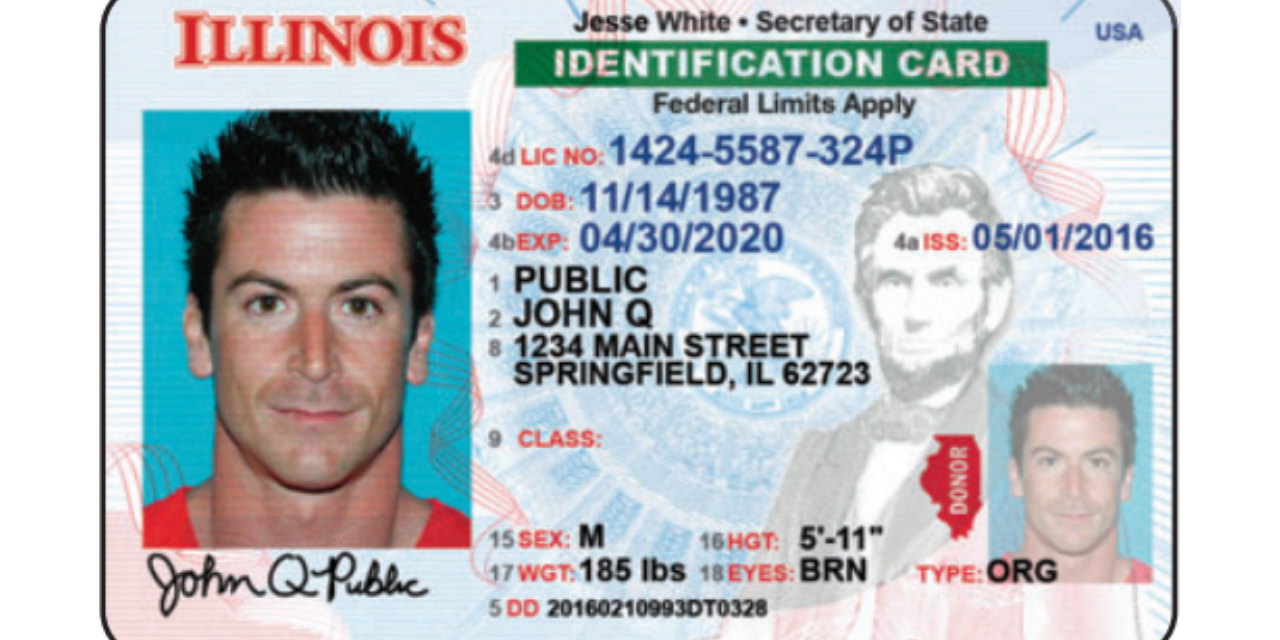
Illinois’ New “Person With A Disability Identification Card”

May a D.C. sign an application certifying disability for issuance of the card?
Illinois permits the Secretary of State to issue a special Illinois Identification Card, called an “Illinois Person with a Disability Identification Card (Disability ID),” to any resident of the State of Illinois who qualifies as a person with a disability. The law includes chiropractic physicians as medical professionals who may sign the form certifying that the applicant has a physical disability and the classification of the extent of the disability. It is the applicant’s responsibility to file the form with the Secretary of State.
Chiropractic Physicians can sign forms for disability cards.
Holders of a Disability ID may use the card for ordinary identification purposes, or as proof of disability when required under any State law. The card appears as a regular State ID with an additional annotation showing that the holder is a person with a documented disability.
The application may be found on the Secretary of State website here: https://www.cyberdriveillinois.com/publications/pdf_publications/dsd_x164.pdf
The types of disability refer to the bodily system affected, and the classification indicates the extent to which the disability impacts daily activities. The Illinois Identification Card Act, Illinois Compiled Statutes 335/4A provides definitions for the types and classifications, which are included on the application form for reference. Although it appears on the application that any category of physician may certify any type of disability, various portions of the rules require a medical report from a “competent medical specialist” when additional information is needed regarding a developmental, visual, hearing, or mental disability. Therefore, the ICS believes that chiropractic physicians may, without qualification, certify physical disabilities but should use great discretion in certifying other categories of disabilities that are not generally within chiropractic scope, training, or experience.
Types of Disabilities
Type One: Physical (P) A physical disability is a physical impairment, disease, or loss, which is of a permanent nature, and which substantially limits physical ability or motor skills.
Type Two: Developmental (D) Developmental disability means a disability that is attributable to (i) an intellectual disability, cerebral palsy, epilepsy, or autism or (ii) any other condition that results in impairment similar to that caused by an intellectual disability and requires services similar to those required by persons with intellectual disabilities. Such a disability must originate before the age of 18 years, be expected to continue indefinitely, and constitute a substantial handicap.
Type Three: Visual (V) A visual disability is blindness, and the term “blindness” means central vision acuity of 20/200 or less in the better eye with the use of a correcting lens. An eye that is accompanied by a limitation in the fields of vision so that the widest diameter of the visual field subtends an angle no greater than 20 degrees shall be considered as having a central vision acuity of 20/200 or less.
Type Four: Hearing (H) A hearing disability is a disability resulting in complete absence of hearing, or hearing that with sound enhancing or magnifying equipment is so impaired as to require the use of sensory input other than hearing as the principal means of receiving spoken language.
Type Five: Mental (M) A mental disability is a significant impairment of an individual’s cognitive, affective, or relational abilities that may require intervention and may be a recognized, medically diagnosable illness or disorder.
Classifications of Disabilities
Class 1: A Class 1 disability is any type of disability which does not render a person unable to engage in any substantially gainful activity, or which does not impair the person’s ability to live independently or to perform labor or services for which he/she is qualified.
Class 1a: A Class 1a disability is a Class 1 disability which renders a person unable to walk 200 feet or more unassisted by another person or without the aid of a walker, crutches, braces, prosthetic device, or a wheelchair, or without great difficulty or discomfort due to the following impairments: neurologic, orthopedic, oncological, respiratory, cardiac, arthritic disorder, blindness, or the loss of function or absence of a limb or limbs.
Class 2: A Class 2 disability is any type of disability which renders a person unable to engage in any substantially gainful activity, or which substantially impairs the person’s ability to live independently without supervision or in-home support services, or which substantially impairs the person’s ability to perform labor or services for which he/she is qualified or significantly restricts the labor or services which he/she is able to perform.
Class 2a: A Class 2a disability is a Class 2 disability which renders a person unable to walk 200 feet or more unassisted by another person or without the aid of a walker, crutches, braces, prosthetic device or a wheelchair, or without great difficulty or discomfort due to the following impairments: neurologic, orthopedic, oncological, respiratory, cardiac, arthritic disorder, blindness, or the loss of function or absence of a limb or limbs.
Issuance of a Disability ID does not preclude the holder from receiving a driver’s license; however, the Secretary of State may use the information for review and possible cancellation of the license if the disability would seriously impair driving ability.


















